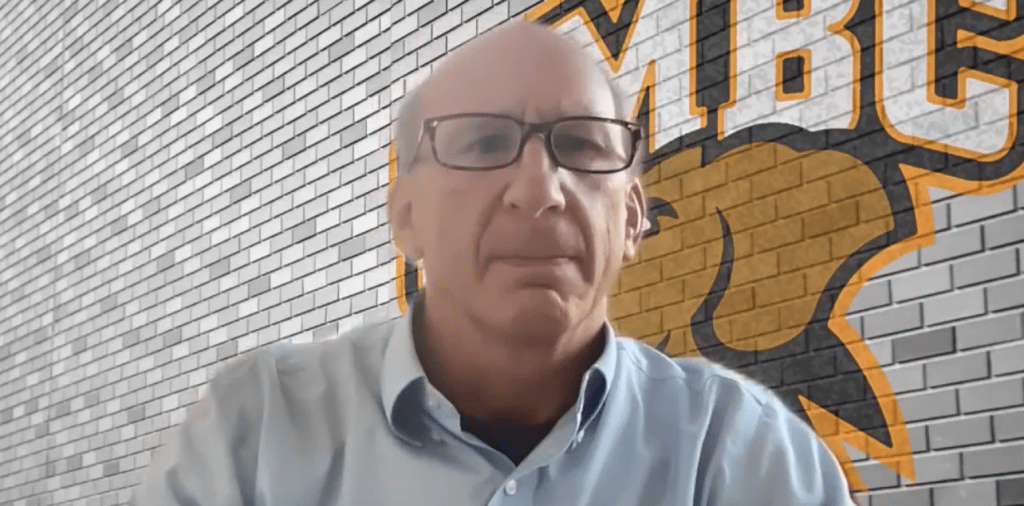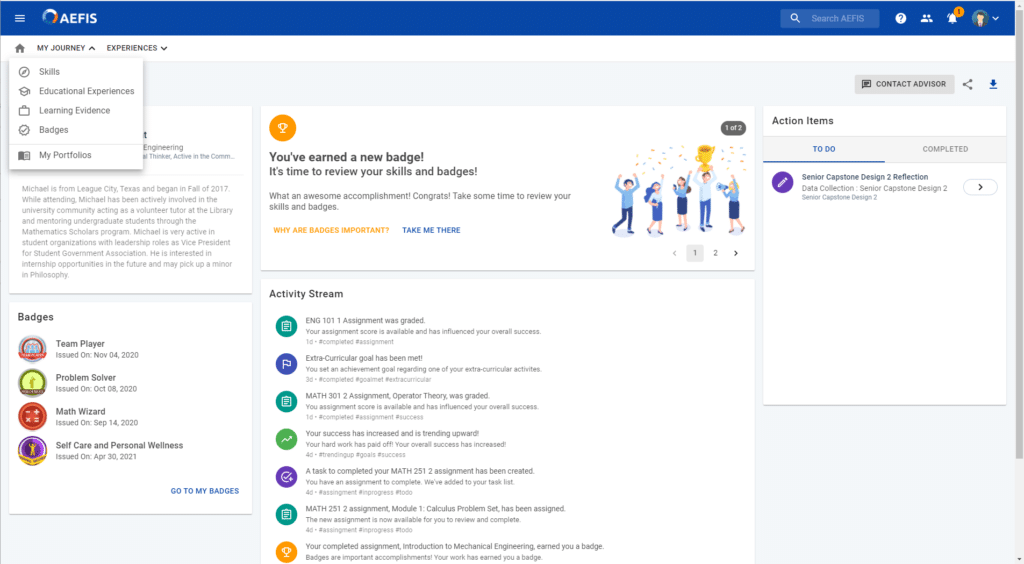Student success is heavily dependent on student engagement in courses AND in the institution at large. My interest in micro-credentials and Comprehensive Learner Record (CLR) is driven by my early experiences at the University of Maryland Baltimore County (UMBC), developing strategies aimed at improving student success. In 2006, I was given the opportunity to work with our Dean of Undergraduate Academic Affairs on analytics and systems to track and manage student success. A big part of our work was rethinking our tools for advising, both for students and their advisors. What was common in all these efforts was how important it was to think holistically about the student experience.
Early on, we built systems to track involvement and engagement. As I look forward, I believe this work can be much better organized, more transparent to the student and advisor, and better managed using a micro-credentials model and the CLR. Which prompts my ideas and considerations below.
In fall 2021, I had the opportunity to connect with colleagues across the country at the EDUCAUSE Annual Conference held in person this year in Philadelphia. And as part of my participation in the annual event, I took part in a simulated CIO Shark Tank experience with two other Chief Information Officers (CIOs) that enabled me to brainstorm ideas for improving the student experience. The challenge from the team at EDUCAUSE to participants was to propose big ideas to a student audience.
For my idea, I chose to launch a company, myEduJourney.me that would utilize CLR to launch a service for students to provide tools for managing both career, privacy, and sharing of CLR with friends, family, and companies. The video of this pitch is less than 3 minutes, click this link to view it.

Preparing for this effort, I did some research on the current academic transcript and found that the modern transcript represented a radical transformation in the early 1910s and by the late 1920s was adopted throughout most of higher education. Prior to 1910, there was no common format for grades and no common format for tracking what courses a student took or completed. The transcript was designed to support students moving from an undergraduate program at one institution to graduate school at a different institution, as well as students transferring between institutions— all to provide an understanding of the prior preparation of students. And as intended, it has served its purpose well in enabling the movement of students between institutions.
However, the transcript was never designed or intended to express to students or employers the skills, competencies, and experiences that a learner earned or participated in from attending their institution. In contrast, CLR has been designed by AACRAO (academic registrars), NASPA (student affairs), NILOA (National Institute for Learning Outcomes Assessment), and IMS Global (EdTech standards) as an open standard tracks skills, competencies, and experiential learning. The fact that this is an open standard is important in allowing an ecosystem of vendors and institutions to utilize CLR. As a standard within IMS Global, institutions and vendors will control how the CLR standard evolves over time. Recently, CLR has seen great interest among employers AND companies designing modern HR recruitment, selection, and employee management systems.

I’m passionate about CLR because it gives students insight into the learning that happens inside and outside the classroom. In 2020, I presented a session at EDUCAUSE on CLR, that included leaders from NASPA, AACRAO, and IMS Global and came away believing that CLR will be one of the most important digital transformations that happen in the decade (click here to view the session).
What impressed me was a video we had from a student, April Jolley, of the University of Central Oklahoma (UCO). UCO has launched a program named Transformational Learning, or TL, that utilizes CLR and April was a non-traditional student that went through the program. She describes the benefits of TL for her as a busy adult, raising four children here.
Now fast forward back to my SharkTank 2021 project and lessons learned—we as higher education leaders have the opportunity to make good on our promise to prepare students for their future and give them the chance to practice skills and earn competencies to succeed in their careers. But we must be more intentional in sharing with them the skills, competencies, and experiences they are gaining in real-time. By doing so, they can see their value to their world, while they are still preparing, learning, and trying out new things. To support students, we need to recognize that while the transcript has an important purpose, it is not sufficient enough to support students or employers alone. We need to ask our institutional stakeholders to prioritize the adoption and implementation of CLR.
My institution, the University of Maryland, Baltimore County, is now moving in this direction. I feel certain our academic leadership appreciates how this project aligns with work we have underway to update our general education requirements, support direct measures of learning and student learning outcomes, and define and document the UMBC co-curricular and experiential learning efforts. Support for tracking student learning outcomes, utilizing micro-credentials, supporting experiential learning, and producing CLR was the primary reason we purchased AEFIS as a unified platform for assessment management, learner success, and continuous improvement. Working with the combined HelioCampus+AEFIS platform, I am confident my vision in the MyEduJourney.me video will become a reality.


